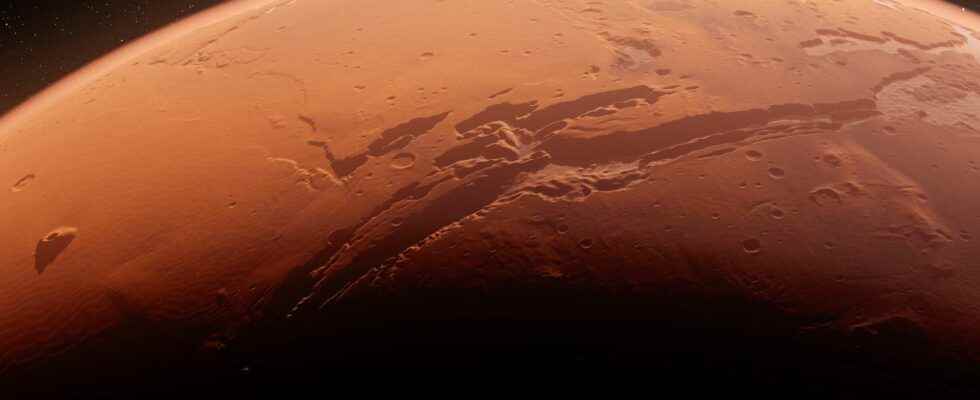landed on the surface of Mars, the InSight instrument records since November 2018 all the seismic activity that regularly shakes the Red Planet. Equipped with a seismometer but also an instrument for measuring the flow of heatInsight aims to collect data that will lead to a better understanding of the internal structure of the planet, its formation and its evolution.
Because the seismology brings a lot of information on the different envelopes that make up the planets. Analysis seismic waves has thus greatly contributed to our knowledge of the interior of the Earth and to the characterization of the deep layers, in particular the coat and the core, which are not accessible by any other geophysical method.
As on Earth, seismic waves make it possible to “see” inside Mars
During an earthquake, waves travel in all directions inside the Earth. Their shape as well as their speed will depend mechanical characteristics environments crossed. The recording of the waves and their analysis will thus make it possible to estimate the density of the medium, to know whether it is solid or liquid, and to make assumptions about its composition. This principle also applies to Mars as to any other rocky planet.
Because, like the Earth, Mars is shaken by earthquakes. But there are some differences. On our planet, the most powerful earthquakes are generated by tectonic processes. It is these earthquakes that will make it possible to image the interior of the planet most deeply. However, Mars does not have a tectonic plates. The tremors recorded on the Red Planet have other origins. The thermal contraction of the surface part of the planet, but also landslides, could be the cause of Martian earthquakes. However, these are of much lower intensity than the earthquakes of tectonic origin that we know on Earth.
Insight detects two earthquakes of magnitude greater than 4
Never mind. InSight’s ear is sensitive and, in 3 years, has recorded more than 950 seismic events, providing proof that the planet was indeed subject to seismic activity. But the low power of these earthquakes did not allow deep imaging of the interior of the planet, the instrument being able to detect only earthquakes whose source was relatively close. In August and September 2021, however, InSight detected two larger events, of magnitude Mw 4.2 (S0976a) and 4.1 (S1000a). To date, these are the two most powerful earthquakes recorded on Mars.
More importantly, the source of these earthquakes is located at a great distance from the small measuring station, at the other end of the planet. The epicenter of the S0976a earthquake, of magnitude 4.2, is located in Valles Marineristhe gigantic canyon scarring the surface of the planet. Previous studies showed the presence of recent faults and landslides inside the Valles Marineris, suggesting that this zone was seismically active. InSight is now proving it.
For the first time, Insight records waves that have passed through the Martian core
The origin of the S1000a earthquake, of magnitude 4.1, could not be determined with precision. But the scientists are certain that it is located at a great distance from the seismometer, the waves received being characteristic of the shadow zone of the core. During this earthquake, InSight recorded very specific wave arrivals. These are P waves.Diff, small amplitude waves whose characteristics indicate that they have crossed the boundary between the core and the mantle. This event is thus the first to make it possible to image the interior of the Red Planet so deeply.
The two earthquakes also appear to have different causes. The one that took place in the region of Valles Marineris would have a deep source, perhaps 50 km or more, while the second would be much more superficial.
All the results have been published in the journal The Seismic Record. Scientists are now working to sift through these recordings. Detailed analysis of the seismic signal could identify new phases, such as S wavesDiffwhich would make it possible to refine the velocity models for the crustthe mantle and the core of Mars.
Support your independent scientific media: discover our subscription formulas!
4 good reasons to subscribe to Futura on Patreon:
- A site without any advertising from 3.29 euros per month.
- It is without commitment.
- Access to priority content, in preview, just for you.
- You support our business in the best possible way. A real motivation for us!
Interested in what you just read?
